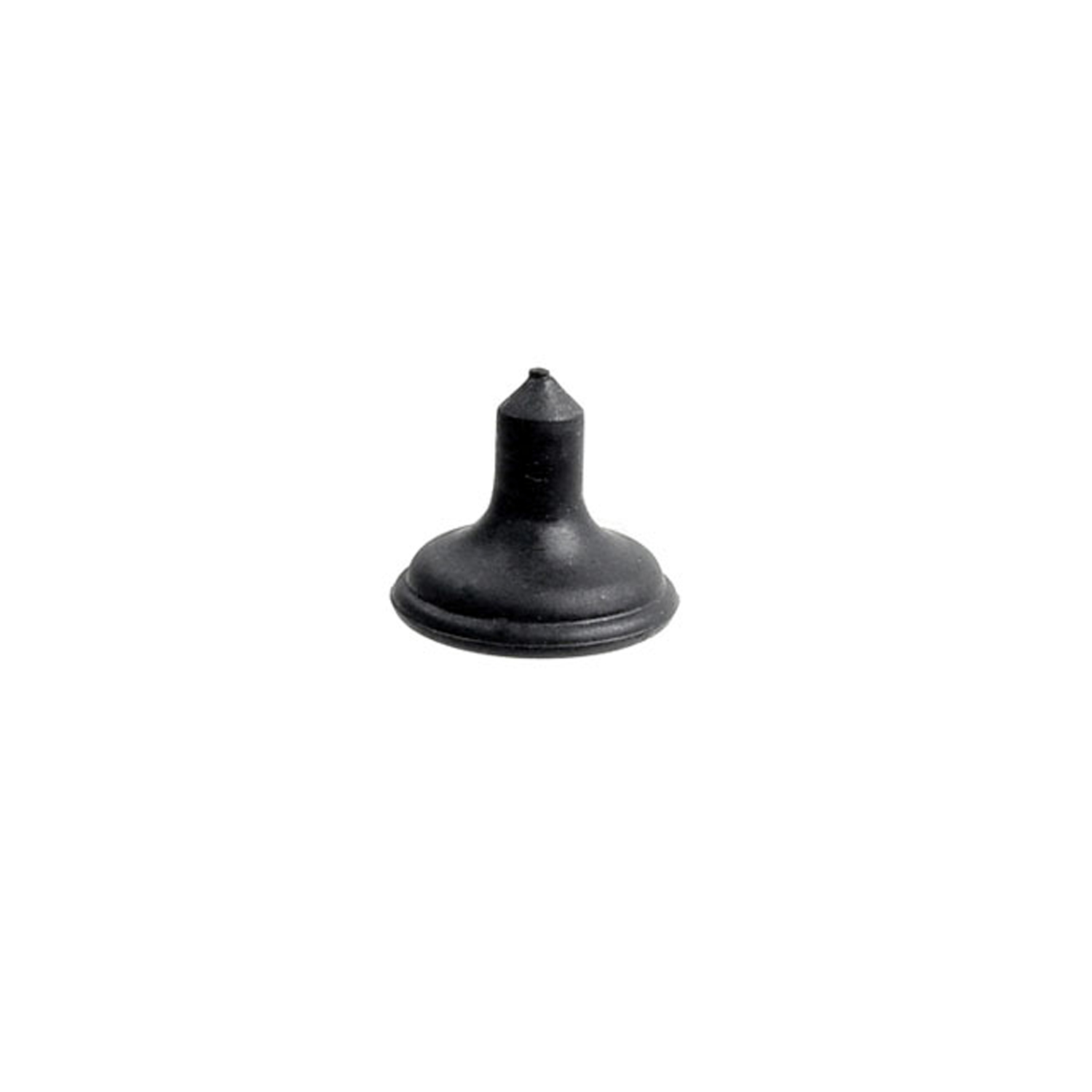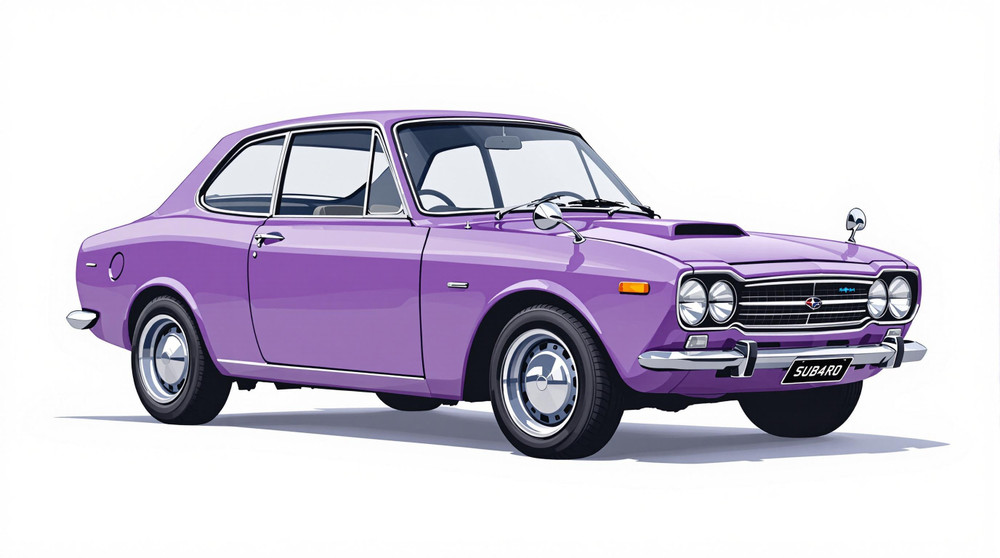Image of 1969 Subaru 360, Note: These illustrations use artistic license and may differ from actual historical models.
Performance Metrics
Fundamental Metrics
Emotional Appeal
MMP Rating
| Engine Specifications | |
|---|---|
| Engine: | 2-stroke, 2-cylinder |
| Displacement: | 356 cc |
| Horsepower: | 25 hp |
| Torque: | 25.4 lb-ft |
| Compression Ratio: | 6.7:1 |
| Ignition System: | Points and condenser |
| Cooling System: | Air-cooled |
| Performance Specifications | |
| 0-60 Time: | 37.5 seconds |
| 1/4 Mile Time: | Estimated 22 seconds |
| Top Speed: | 60 mph |
| Transmission and Drive | |
| Drive Type: | Rear-wheel drive |
| Transmission Type: | 4-speed manual |
| Fuel and Efficiency | |
| Fuel System Type: | Carburetor |
| MPG: | 66.3 mpg |
| Dimensions and Brakes | |
| Brakes: | Drum brakes |
| Wheelbase: | 70.9 inches |
| Weight: | 925 lbs |
Note: Specifications for classic cars are given to the best of our ability, considering the limited and variant data available.
Unveiling the Charm of the 1969 Subaru 360
The 1969 Subaru 360 may not be the first vehicle that comes to mind when you think of classic cars, but it certainly holds its own unique place in automotive history. Born from the innovative minds at Subaru, a company known for its ventures into uncharted territories of design and technology, this little car made a significant impact during an era where bigger often meant better. With its diminutive stature and quirky features, the Subaru 360 was a breath of fresh air during the muscle car era and introduced many Westerners to the concept of Kei cars—a category of small vehicles popular in Japan.
Design and Innovation
The exterior styling of the 1969 Subaru 360 was nothing short of distinctive. Its rounded, beetle-like shape and friendly front fascia gave it an almost animated character. The compact dimensions were purposeful, adhering to Kei car regulations in Japan while also providing surprising roominess given its size. Inside, occupants were greeted with a simple yet functional cabin, where the use of materials was modest but effective for an economy car of that period. Technologically, it boasted independent suspension all around—a feature not commonly found on vehicles in its class.
Color options for the Subaru 360 varied, with shades like 'Subaru Red' and 'Mint Blue' being among the popular choices that added to its playful appearance. The most iconic body style was undoubtedly the two-door sedan, though other options such as a convertible and even a van version were available, catering to a wide range of needs.
Historical Significance
The historical significance of the Subaru 360 can be seen in its role as a pioneer for small cars in markets dominated by larger vehicles. It set itself apart with its efficiency and affordability at a time when fuel economy was not typically a selling point. This little car's legacy is evident in how it paved the way for future generations of compact and efficient vehicles.
Performance and Handling
Performance-wise, the Subaru 360's rear-mounted two-stroke engine produced just about 25 horsepower, which propelled the featherweight car to a top speed near 60 mph. Acceleration from 0-60 mph was a leisurely affair by today's standards but was adequate for its intended urban environment. Handling was nimble due to its light weight and compact size, making it quite capable of navigating through tight spaces with ease. The driving experience was characterized by the distinct hum of its two-stroke engine—a sound that owners came to know and love.
Ownership Experience
The Subaru 360 found its place as an economical daily driver but also gained popularity among collectors and enthusiasts who appreciated its uniqueness. Maintenance and reliability were straightforward thanks to its simple mechanical design, making it accessible for average owners to keep running without specialized knowledge or tools.
Fun Facts
A few fun facts about the Subaru 360 include its affectionate nickname "ladybug" in some markets and how it became Subaru's first successful export; notably entering the North American market despite initial skepticism. While not known for setting speed records, it certainly set benchmarks for affordability and efficiency.
Collector's Information
Today, finding a 1969 Subaru 360 can be quite a treasure hunt with estimates suggesting that around 392,000 units were produced during its entire production run from 1958 to 1971. Values for these collectible microcars vary greatly depending on condition but can range anywhere from $5,000 for a project car up to $15,000 or more for well-preserved examples. The market trend shows appreciation over time as more enthusiasts seek out unique pieces of automotive history.
Conclusion
The 1969 Subaru 360 stands as a testament to innovation and efficiency in an age dominated by power and size. Its charm continues to resonate with collectors and classic car aficionados who appreciate its simplicity and historical significance. As we look back on this pint-sized automotive marvel, we are reminded that sometimes great things truly do come in small packages.
1969 Subaru 360 Catalog of Parts
 1969 Subaru 360 Fuel Valve Tip. 7/8" O.D., 7/8" high. Each-PL 11Fuel Valve Tip. 7/8" O.D., 7/8" high. Each
1969 Subaru 360 Fuel Valve Tip. 7/8" O.D., 7/8" high. Each-PL 11Fuel Valve Tip. 7/8" O.D., 7/8" high. EachWhy Choose Metro?
For over 100 years, Metro Moulded Parts has been the pinnacle of quality in classic car restoration parts. Our commitment to precision and authenticity in every component ensures a perfect fit and an OEM-level appearance.
- Expert Craftsmanship & Quality: Each part is a testament to our dedication to reliability and perfection, crafted from original designs and thoroughly tested.
- Advanced Technology: We use cutting-edge techniques to create flawless, long-lasting parts that surpass others in performance.
- SuperSoft Sponge – The Ultimate Door Seal: Not only are our door seals 30% softer than competitors', but they're also guaranteed to never leak. They effectively reduce wind and road noise, enhancing your classic car's comfort and driving experience.
- Proudly American: Our parts are a product of American craftsmanship, made in the USA with a spirit of excellence and heritage.
- Unrivaled Warranty: We back our products with a 30-year industry-leading warranty, a testament to our confidence in their quality.
Join us in preserving the legacy of classic cars with parts that are crafted for perfection, not just made.

